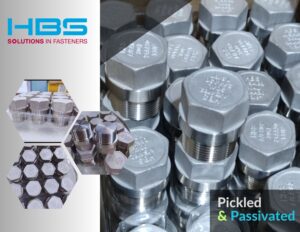Understanding the 4D and 5D Elongation Tests in Fasteners: ASTM Standards and Material Performance
When it comes to fasteners, ensuring they meet the necessary standards for performance and durability is critical. One of the most important aspects of this is testing their elongation, particularly under stress. In this blog, we’ll explore the 4D and 5D elongation tests in fasteners, including their significance, how they’re performed, and what ASTM standards say about them.


What Are Elongation Tests?
Elongation tests measure how much a fastener can stretch before it breaks, determining the ductility and flexibility of the material. These tests are essential for ensuring that fasteners can withstand the forces they will encounter in real-world applications.
The Origins of the Elongation Test
The concept of elongation testing dates back to the late 19th century when engineers and material scientists began developing standardized methods to ensure material consistency and reliability. The elongation test was introduced as a way to quantify the ductility of materials, which was crucial for the construction of early steel bridges and other industrial structures.
Although the exact individual who introduced the elongation test is not clearly documented, it emerged as a critical tool during the industrial revolution, laying the foundation for modern material testing standards like those established by ASTM.
The Difference Between 4D and 5D Elongation Tests
4D and 5D elongation tests are standardized methods used to assess the elongation of fasteners, but they differ in the length over which the elongation is measured:
When Is Each Test Performed?
– When 4D Is Used: The 4D elongation test is generally conducted on shorter fasteners where the critical measure of elongation is within a shorter length (four times the diameter). This test is ideal for applications requiring precision in a confined area.
Range of Elongation in Materials
The elongation range in materials can vary significantly based on composition and application. Different ASTM standards specify the minimum elongation requirements for various materials:
Why Aren’t Elongation Tests Performed on Nuts?
Elongation tests are specific to fasteners like bolts and screws that stretch under load. Nuts, however, do not undergo elongation in the same way. Instead, they are subjected to proof load testing, which measures their ability to withstand axial stress without deformation.
Since nuts are not designed to stretch, performing an elongation test would not yield meaningful data. The primary concern with nuts is their ability to maintain integrity and thread engagement under load, not their elongation capacity. Therefore, elongation tests are not required and cannot be performed on nuts.

The 4D and 5D elongation tests are essential tools in the fastener industry, each serving its purpose depending on the fastener’s dimensions and application requirements. While the 4D test remains valuable for shorter fasteners, the 5D test offers enhanced insights for longer fasteners, ensuring that products meet the highest standards of durability and performance.
By understanding the range of elongation in materials and the relevant ASTM standards, manufacturers can ensure that fasteners are designed and tested for optimal performance. And when it comes to nuts, rest assured that different, equally rigorous tests ensure their reliability.
Pickling and Passivation: Spotless surface and weatherproof coating for stainless-steel fasteners. A suitable surface treatment is crucial to guaranteeing the performance and lifespan of fasteners. Two popular techniques for this
Understanding the 4D and 5D Elongation Tests in Fasteners: ASTM Standards and Material Performance When it comes to fasteners, ensuring they meet the necessary standards for performance and durability is



